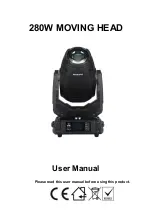
SHOULDER PACEMAKER
TM
- User Manual 04-06EN
15
FUNCTIONING OF THE DEVICE
DEVICE DESCRIPTION
The device is managed by rotating the
wheel
(a)
and pressing the button
(b).
The
status of the device (on, off, stimulation,
charging) is indicated by the yellow led in
the center of the device
(c)
. The
management of the menu and the
regulation of the intensity of the
stimulation are revealed by the turning on,
off or flashing of the band of the red leds
(d)
, that are switched on in sequence
according to wheel rotation.
The alarm warning due to a low battery
charge level is signaled through the lighting
of a red led
(e)
, placed as shown in figure.
Along the lateral circumference, the device
has an opening for the alternative insertion
of either stimulation
(f)
or recharge
(g)
connector.
BASIC INSTRUCTIONS
BEGINNING OF A STIMULATION SESSION
Before using the device, be sure to recharge it for at least 30 minutes. In order to turn on the device and start a stimulation session, press
the button for 2 seconds. When switched on, the lateral band of red leds and the central yellow led will light up. The number of lit and
flashing red LEDs within the lateral band indicates the percentage of charge of the stimulator battery.
After 5 seconds, the device automatically enters the program selection mode in which the central yellow led will be on and flashing.
CHOICE OF THE PROGRAM
In the program selection phase, the central yellow led is on and flashing, while one of the lateral red leds lights up to indicate the actual
selection of a program. At start-up, the first of the led sequence that corresponds to the first settable program will be illuminated. By
rotating the wheel progressively one of the successive leds corresponding to one of the device programs will light up. The label of each
program is shown on the stimulator case under each led. The program is selected by pressing the button.
PROGRAM SELECTION
For safety reasons, stimulation does not start immediately after selecting the program. The selection of the program must be confirmed
by pressing the button. As long as the choice is not confirmed, the red led, in correspondence of the selected program, is in flashing
mode. If the program has been erroneously selected, do not confirm the selection with the button and turn the wheel to return to the
program selection phase.
START OF STIMULATION
The start of the selected program causes the central yellow light to switch on in continuous mode. During the execution of the stimulation
programs, the lateral red leds band represents the intensity of the stimulation (each led implies an intensity of 21 V). Refer to Appendix A
for details.
STOP AND SWITCH OFF THE STIMULATOR
In order to end the program, the subject must press the button. The device returns to the program selection mode (with central yellow
led flashing and one led of the lateral band switched on). A 10 seconds continuous pressure on the button causes the device to switch off.
In any case, for safety reasons, the device is automatically shut off after 120 minutes from power on.
BATTERY CHARGE STATUS AND STIMULATOR CHARGING PROCEDURE
During recharging, the central red led is on. The charging level is indicated by the lateral red led bar. When recharging, the led bar lights
up with a cumulated ramp that indicates the current charging level. When the charge is completed the ramp will stop increasing and all
the red leds on the bar will be lit and fixed.
During the device switching on phase, the current state of charge is represented by the number of lit red leds along the lateral bar. In fact,
when the device is turned on, the number of flashing LEDs (in the first 5 seconds) is proportional to the state of charge of the device. For
example, for charging over 90% all 7 leds in the band flash in sync. For charges between 50% and 90% 4 leds flash, for charging between
20% and 50% 2 leds flash and for the charge below 20% only the first led flashes. In case of low charge level (below 20%), the first led of
the lateral bar will blink for 5 seconds while the red alarm, as described in (e), led will light up, flashing permanently.
Summary of Contents for SHOULDER PACEMAKER SPM Series
Page 1: ......






































